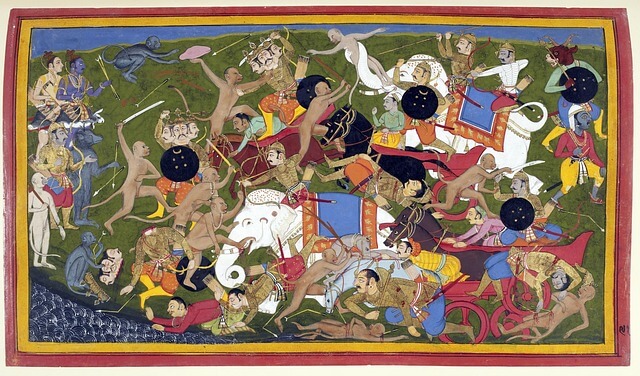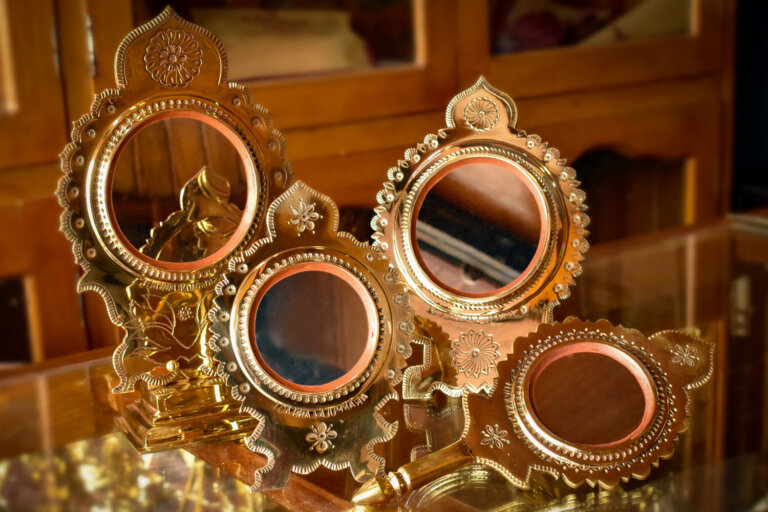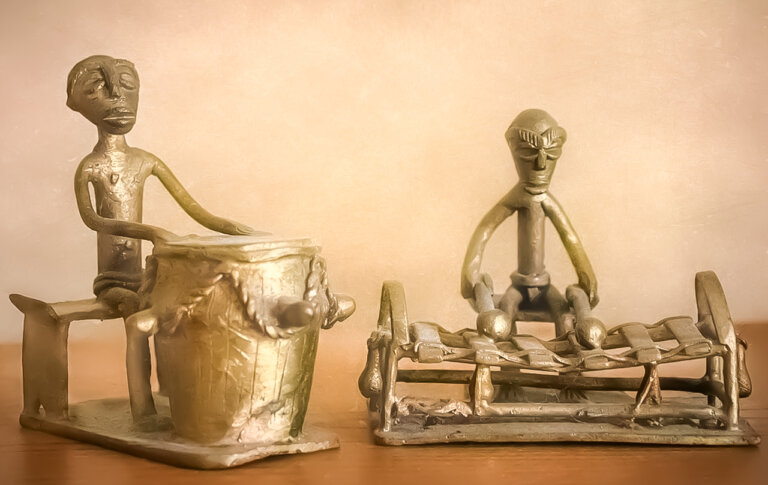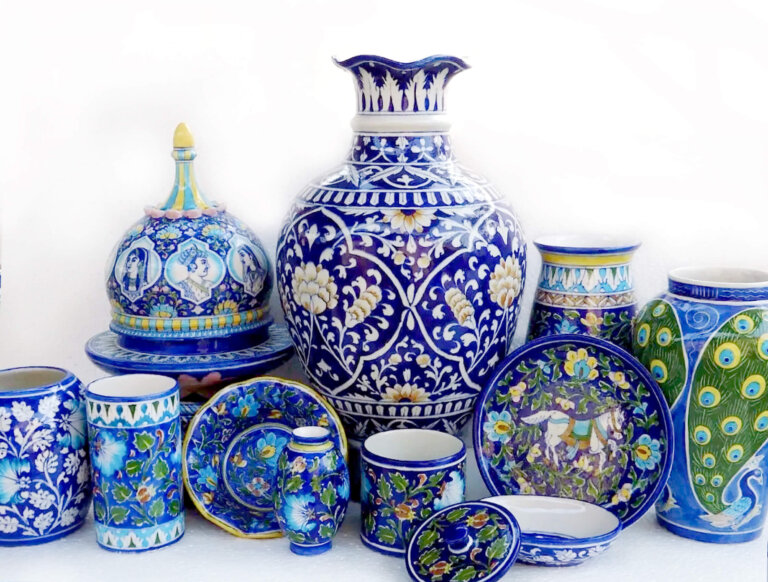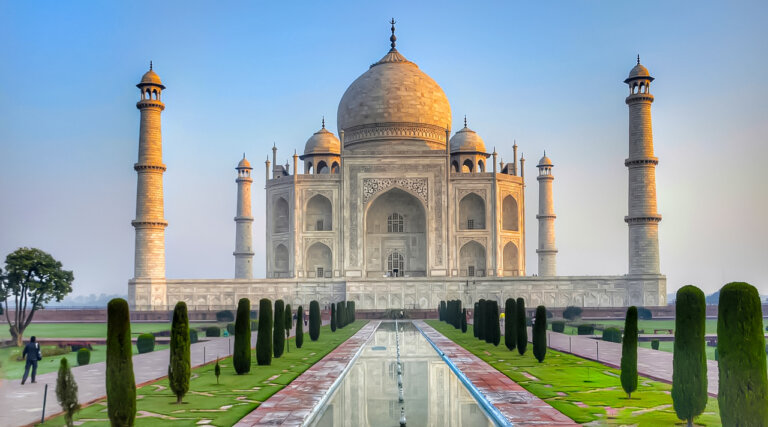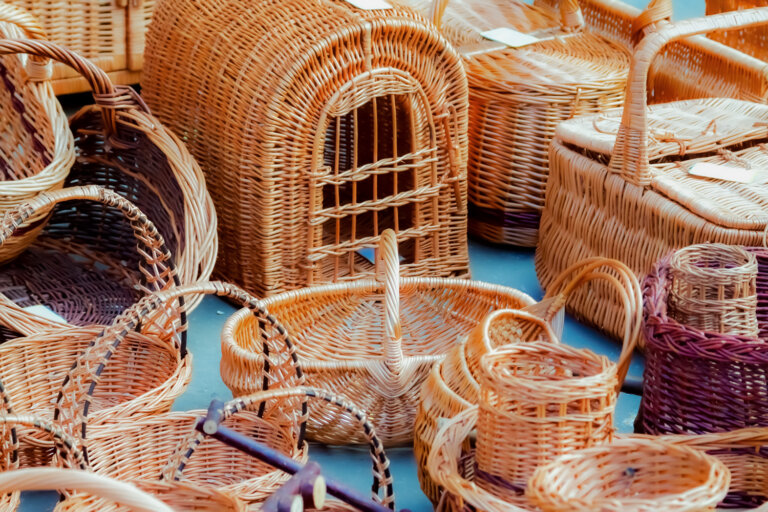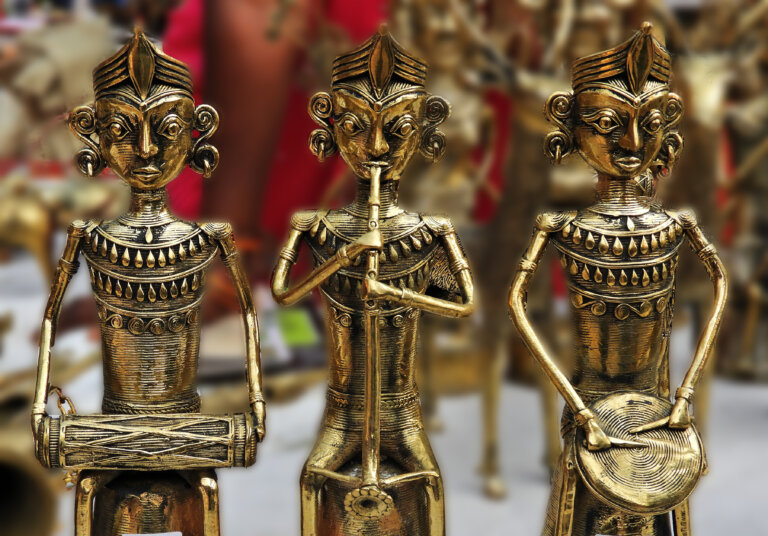Madhubani Paintings: Mother of Traditional Handicrafts in India
India, a land brimming with cultural heritage and traditional craftsmanship, holds a gem among its vast array of handicrafts—the mesmerizing art form of Madhubani painting. Known as the “Mother of Traditional Handicrafts,” Madhubani painting is not just a craft; it is a testament to the artistic prowess, cultural significance, and timeless beauty of Indian traditional art. In this article, we delve into the origins, techniques, and enduring legacy of Madhubani painting.
Origins and Mythological Roots:
Originating in the Mithila region of Bihar, Madhubani painting has deep roots intertwined with mythology and folklore. According to legend, King Janak of Mithila commissioned artists to create intricate paintings for his daughter Sita’s wedding. These paintings, known as Madhubani or Mithila art, adorned the walls of homes, spreading vibrant colors and narrating stories of deities, celestial beings, and everyday life.
Technique and Materials:
The technique of Madhubani painting has been passed down through generations of women artists, guarded as a closely kept secret. Traditionally, natural pigments derived from plants, minerals, and earth were used, lending the paintings their distinct earthy tones. Artists employ fine lines, intricate patterns, and bold colors, using brushes made from twigs, fingers, and even matchsticks. These techniques bring to life mythological stories, religious motifs, and scenes from nature.
Themes and Symbolism:
Madhubani paintings encompass five distinctive styles, each representing a different narrative. The themes range from religious and mythological tales, such as the Ramayana and Krishna’s Leela, to depictions of nature, animals, and daily village life. The paintings are adorned with symbols and motifs carrying deep cultural and symbolic significance. For instance, the lotus flower signifies purity and beauty, while the peacock symbolizes fertility and love. Each stroke and element in the painting carries hidden meanings and stories passed down through generations.
Empowering Women and Sustaining Traditions:
One remarkable aspect of Madhubani painting is its association with women artists who have preserved and passed down the art form from mother to daughter. This craft has not only provided a creative outlet but has also empowered women in rural communities by offering a source of income and recognition for their artistic talents. Organizations and initiatives have emerged to support and promote Madhubani artists, ensuring the continuation of this cherished art form.
Global Recognition and Contemporary Adaptations:
In recent years, Madhubani painting has garnered international acclaim. Its intricate designs and vibrant colors have captivated art enthusiasts and collectors worldwide. The art form has transcended traditional mediums and can now be found adorning textiles, pottery, home decor items, and fashion accessories. While contemporary adaptations have brought innovation and commercial viability, efforts are being made to preserve the authenticity and cultural heritage of Madhubani painting.
Madhubani painting stands as the epitome of traditional Indian handicrafts, deeply rooted in mythology, culture, and the lives of women artists. Its intricate beauty, rich symbolism, and empowering legacy have made it an iconic art form both within India and globally. As we celebrate the “Mother of Traditional Handicrafts,” let us continue to appreciate, preserve, and support Madhubani painting, ensuring that this timeless art form continues to inspire generations to come.
India, a land brimming with cultural heritage and traditional craftsmanship, holds a gem among its vast array of handicrafts—the mesmerizing art form of Madhubani painting. Known as the “Mother of Traditional Handicrafts,” Madhubani painting is not just a craft; it is a testament to the artistic prowess, cultural significance, and timeless beauty of Indian traditional art. In this article, we delve into the origins, techniques, and enduring legacy of Madhubani painting.
Origins and Mythological Roots:
Originating in the Mithila region of Bihar, Madhubani painting has deep roots intertwined with mythology and folklore. According to legend, King Janak of Mithila commissioned artists to create intricate paintings for his daughter Sita’s wedding. These paintings, known as Madhubani or Mithila art, adorned the walls of homes, spreading vibrant colors and narrating stories of deities, celestial beings, and everyday life.
Technique and Materials:
The technique of Madhubani painting has been passed down through generations of women artists, guarded as a closely kept secret. Traditionally, natural pigments derived from plants, minerals, and earth were used, lending the paintings their distinct earthy tones. Artists employ fine lines, intricate patterns, and bold colors, using brushes made from twigs, fingers, and even matchsticks. These techniques bring to life mythological stories, religious motifs, and scenes from nature.
Themes and Symbolism:
Madhubani paintings encompass five distinctive styles, each representing a different narrative. The themes range from religious and mythological tales, such as the Ramayana and Krishna’s Leela, to depictions of nature, animals, and daily village life. The paintings are adorned with symbols and motifs carrying deep cultural and symbolic significance. For instance, the lotus flower signifies purity and beauty, while the peacock symbolizes fertility and love. Each stroke and element in the painting carries hidden meanings and stories passed down through generations.
Empowering Women and Sustaining Traditions:
One remarkable aspect of Madhubani painting is its association with women artists who have preserved and passed down the art form from mother to daughter. This craft has not only provided a creative outlet but has also empowered women in rural communities by offering a source of income and recognition for their artistic talents. Organizations and initiatives have emerged to support and promote Madhubani artists, ensuring the continuation of this cherished art form.
Global Recognition and Contemporary Adaptations:
In recent years, Madhubani painting has garnered international acclaim. Its intricate designs and vibrant colors have captivated art enthusiasts and collectors worldwide. The art form has transcended traditional mediums and can now be found adorning textiles, pottery, home decor items, and fashion accessories. While contemporary adaptations have brought innovation and commercial viability, efforts are being made to preserve the authenticity and cultural heritage of Madhubani painting.
Madhubani painting stands as the epitome of traditional Indian handicrafts, deeply rooted in mythology, culture, and the lives of women artists. Its intricate beauty, rich symbolism, and empowering legacy have made it an iconic art form both within India and globally. As we celebrate the “Mother of Traditional Handicrafts,” let us continue to appreciate, preserve, and support Madhubani painting, ensuring that this timeless art form continues to inspire generations to come.

